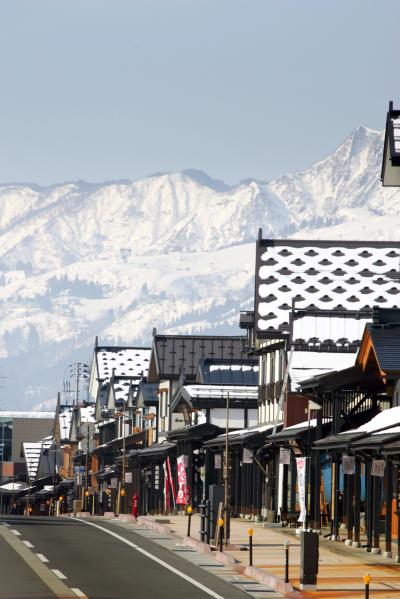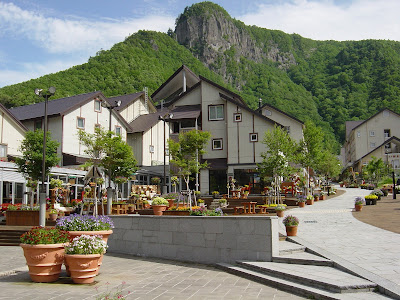
 |
|
|
||||
|
07-27-2011, 06:20 PM
Actually the east Aleutians were invaded by the Japanese in WWII and a large group of Alaskan natives was taken back to Hokkaido as POWs in WWII.
Gonative, I find your observation about Japanese connection with nature, and how that doesn't translate to INSIDE the house very interesting. I too have noticed that views from Japanese homes are barely an afterthought. When Japanese want to associate with nature, they seem to go outside. |
|
|||
|
07-28-2011, 12:57 AM
Nyororin I do understand what happened and why we've ended up with so many ugly buildings in Japan but I guess my point is that it's a real shame that they let the new development happen the way it did and how they let it continue right into modern times well after the immediate period following the war. Japan has some amazing architects and architecture but the average house built seems to be little more than utilitarian. Aesthetics barely seems to come into it. Hokkaido was really bad in this respect. When I travelled down south it wasn't quite as bad.
MMM you may be right but I still fail to understand how anyone of any cultural persuasion wouldn't get pleasure from waking up in the morning with a view towards this   |
|
|||
|
07-28-2011, 01:44 AM
Here's some examples of what is possible with some motivation.
Here is Shiozawa town area of Mimaniuonuma city, between Yuzawa and Muikamachi. This was only recently upgraded to look like this. All buildings along the main street have been given a similar facade. Nice paved sidewalks. Restrictions on signs on buildings or onto the sidewalk. Power lines have gone underground. Pretty simple stuff that makes a huge difference in the appeal of the town.  Niseko town in Hokkaido. Again conformity of the building facades along the main street. Wide, paved sidewalks with alfresco seating and restrictions on advertising on buildings or the sidewalks. And powerlines underground. Once you get off the main street the powerlines are still above ground but even it's just the main street it makes an incredible difference.  Sounkyo in Hokkaido. Central part of the village has broad paved walkways and decked areas and cars are restricted from entering. Conformity of building design and signage. Powerlines are underground. One of the most beautiful little villages I've stayed at.  Anyway my point is that most towns in Japan could really benefit from similar makeovers. All of these areas have been created to look this way reasonably recently. It is possible to have powerlines underground in Japan. It is possible for towns to impose some planning and building restrictions to bring back character and aesthetic beauty to towns. Obviously not all towns will have the funding but the main thing lacking currently I believe is motivation not funding. We all know how much money is wasted in Japan each year on public works on things like bridges, tunnels and roads to nowhere through pork barrelling and corruption. Put some of this back into town improvements and it could make a huge difference. |
|
||||
|
07-28-2011, 01:57 AM
Like in the only place in Tokyo where that is: Ginza....
GoNative, were there many headaches with snow accumulating on the lines and snapping them? Here in the States, when it's a freezing rain or heavy snowfall, the lines can't handle the weight and snap, causing power outages.... Does that tend to happen in towns where the power lines aren't buried? I remember seeing some towns there that looked like an electrician's nightmare.... |
|
|||
|
07-28-2011, 02:11 AM
Quote:
Here is a pic of the village at the ski resort I worked at. As you can see the wiring is a complete mess and incredibly ugly. They have started works this summer to put most of the powerlines underground. Will make a huge difference. The village of the resort averages around 15m (50ft) of snow each winter and I never saw powerlines snap. Might be more of an issue down the west coast of Honshu in areas like Niigata. They can get huge dumps of somewhat heavier/wetter snow than what we got up in Hokkaido.  |
|
||||
|
07-28-2011, 02:18 AM
That photo reminded me of my two winters in northern Tohoku. We got, on average, 20 ft. of snow.... Not as much as what you got in the big prefecture to the north of mine, but still quite a bit. The power lines, while they can be horrendous, do have a beauty on their own....
|
|
|||
|
07-28-2011, 02:38 AM
Much more of an issue up our way was snow on roofs. Because it stayed very cold the snow often wouldn't shed off roofs for weeks on end. And in mid winter we'd average well over 1m of snow per week. Houses collapsing under the weight was a bit of an issue. And of course getting buried when they did slide!
Example below  |
|
||||
|
07-28-2011, 05:04 AM
Quote:
 Quote:
Originally, laying underground the power transmission line is a leak countermeasure. The demerit increases if the power transmission line is buried in Japan where a lot of earthquakes exist. The restoration at the disaster slows. (importance) The charge is high. The capital of the local government is a deficit. It is a difficult problem whether there is value that sacrifices the restoration speed.  Cryptanalysis is necessary for you. set a goal:English at the same level as Johan Cruyff |
|
||||
|
07-28-2011, 06:54 AM
The thing all those towns with styled main streets have in common is tourism. Not every town is a tourist attraction.
You know, this reminded me of something. On a trip a few years back to Australia, we rented a car and got out of the tourist land of Cairns. (My husband and I prefer to see the real countryside, real towns, etc.) The friend who was with us had been on 3 trips to Cairns, and was utterly shocked that the entire country didn`t look like the perfectly coordinated tourist aimed streets around the hotels. Places that aim to attract tourists invest money into renovating to match the "image" they are trying to sell. It works great when there is income from tourism that can be both used to do this and which will potentially be increased by doing so. But in the average town without any significant tourism? It would be an incredibly expensive and stressful endeavor. There would have to be some way to convince everyone to rebuild their buildings around the same time, or to surrender their land to make the area prettier. It`s not all that easy. Personally, I hate the artificial tourist streets. I know someone personally who lost half their land and had their 200 year old building torn down...to be replaced by a "new" 200 year old style building that fit the main street image better than their original. All because their town was trying to call in tourists and decided that renovating the main street to fit the image was the best path to take. Now it all feels fake... But gets tourism.  The friend ended up quitting the family business that was what the tourism was supposed to be founded around and now the town has pulled in "travelling craftsmen" who are just students from the local university to pop out souvenirs. The friend ended up quitting the family business that was what the tourism was supposed to be founded around and now the town has pulled in "travelling craftsmen" who are just students from the local university to pop out souvenirs.I think that things would be better off looking better, but I don`t think that tearing down whole areas and replacing them with "better looking" buildings that make it hard to do anything other than run a tourism based business is the answer. |
 |
| Thread Tools | |
|
|